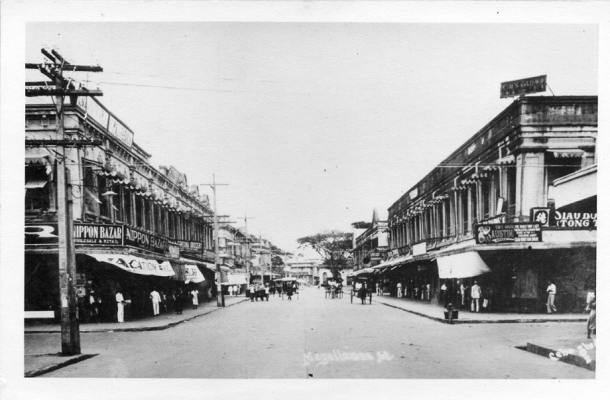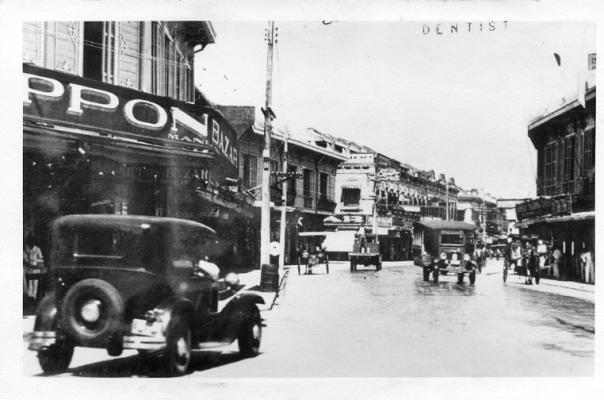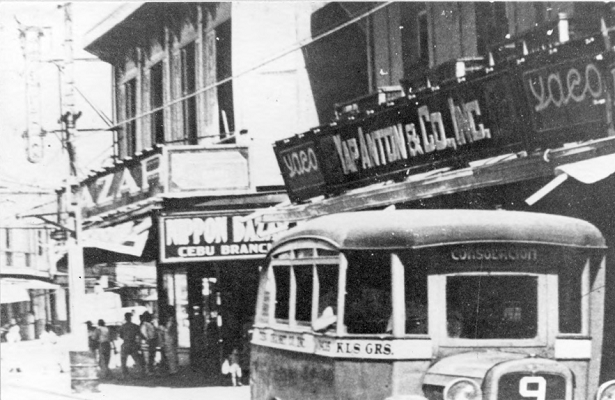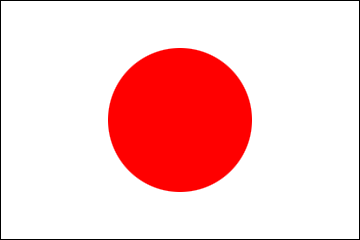Letter from Cebu (No.5) “Relations between Japan and Cebu – Before World War II”
2022/7/27
Letter from Cebu (No.5)
“Relations between Japan and Cebu – Before World War II”
“Relations between Japan and Cebu – Before World War II”
When did the relations between Japan and Cebu start? We need to look at the movement of Japanese in other places within the Philippines.
A milestone year was 1898. The United States annexed Hawaii this year, and as a result, Japanese migrants to Hawaii were suspended. The same year, the United States, after winning the Spanish-American war in 1898, paid Spain 20 million dollars for the possession of the Philippines, in accordance with the Treaty of Paris in 1898. Japanese workers started to move to the Philippines after these events.
The United States, after colonizing the Philippines, started constructing roads leading to their summer retreat in Baguio, Northern Luzon. Americans employed Japanese workers for the road construction. Six hundred and forty eight workers migrated from Japan to the Philippines in 1903, and 360 in 1904. Eventually, 1,400 workers moved to the Philippines, out of which 700 died of accidents or diseases.
After completing the road construction in Baguio, Japanese workers moved to Davao, Mindanao, for working in hemp plantations. Mr. Kyozaburo Ota, an importer of miscellaneous goods, established a hemp plantation firm in Davao. He started to live in Davao in 1905 and established “Ota kougyo”. Mr. Yoshizo Furukawa established “Furukawa Takushoku” in Davao in the same period, and his business was very successful. The business successes of Manila hemp plantation firms was a driving force for increasing the number of Japanese living in Davao. The number reached 20,000 there just before the start of World War II.
Cebu developed as a hub of collecting and transporting Manila hemp and lauan. It is assumed that Japanese people lived and did business in Cebu by 1905 when the Manila hemp business started to run well.
Another milestone year is 1915. The Japanese Association in Cebu was established this year, according to our Philippine almanac 1937. This establishment is earlier than the one in Davao (1918) and Manila (1924). A number of bazaar owned and managed by the Japanese were operating in downtown Cebu (along the Colon Street), and the town looked like a little Tokyo.
In 1923, Daido Trading, a predecessor of Marubeni Corporation, opened its branch in Cebu, along with other trading companies.
In 1933, an elementary school for Japanese was established at 655, Juan Luna, Cebu. Running this elementary school became an important mission for the Japanese Association. The Japanese Association organized baseball league matches and tennis tournaments to promote friendship among the members, and facilitated communication with officials and people in Cebu for facilitating the friendship and goodwill between Japan and the Philippines. The number of members of the Japanese Association in 1937 was 153. A large number of Japanese used to live in Cebu before World War II.
A milestone year was 1898. The United States annexed Hawaii this year, and as a result, Japanese migrants to Hawaii were suspended. The same year, the United States, after winning the Spanish-American war in 1898, paid Spain 20 million dollars for the possession of the Philippines, in accordance with the Treaty of Paris in 1898. Japanese workers started to move to the Philippines after these events.
The United States, after colonizing the Philippines, started constructing roads leading to their summer retreat in Baguio, Northern Luzon. Americans employed Japanese workers for the road construction. Six hundred and forty eight workers migrated from Japan to the Philippines in 1903, and 360 in 1904. Eventually, 1,400 workers moved to the Philippines, out of which 700 died of accidents or diseases.
After completing the road construction in Baguio, Japanese workers moved to Davao, Mindanao, for working in hemp plantations. Mr. Kyozaburo Ota, an importer of miscellaneous goods, established a hemp plantation firm in Davao. He started to live in Davao in 1905 and established “Ota kougyo”. Mr. Yoshizo Furukawa established “Furukawa Takushoku” in Davao in the same period, and his business was very successful. The business successes of Manila hemp plantation firms was a driving force for increasing the number of Japanese living in Davao. The number reached 20,000 there just before the start of World War II.
Cebu developed as a hub of collecting and transporting Manila hemp and lauan. It is assumed that Japanese people lived and did business in Cebu by 1905 when the Manila hemp business started to run well.
Another milestone year is 1915. The Japanese Association in Cebu was established this year, according to our Philippine almanac 1937. This establishment is earlier than the one in Davao (1918) and Manila (1924). A number of bazaar owned and managed by the Japanese were operating in downtown Cebu (along the Colon Street), and the town looked like a little Tokyo.
In 1923, Daido Trading, a predecessor of Marubeni Corporation, opened its branch in Cebu, along with other trading companies.
In 1933, an elementary school for Japanese was established at 655, Juan Luna, Cebu. Running this elementary school became an important mission for the Japanese Association. The Japanese Association organized baseball league matches and tennis tournaments to promote friendship among the members, and facilitated communication with officials and people in Cebu for facilitating the friendship and goodwill between Japan and the Philippines. The number of members of the Japanese Association in 1937 was 153. A large number of Japanese used to live in Cebu before World War II.
Hideki Yamaji
Consul General of Japan in Cebu
(Downtown of Cebu in the 1930s – Nippon Bazaar on the left side)



(Publisher: Southeast Asia Digital Library)
(Contributor: Cebuano Studies Center, University of San Carlos Library, Philippines)
(Reference)
Cebu-toh Tsushin 1994 April Vol 20
Cebu-toh Tsushin 1996 May Vol 33
“Operations of Japanese companies in Philippines before the war and their Manila hemp business in Davao”by Isao Tannno, 2015 No50
Cebu-toh Tsushin 1994 April Vol 20
Cebu-toh Tsushin 1996 May Vol 33
“Operations of Japanese companies in Philippines before the war and their Manila hemp business in Davao”by Isao Tannno, 2015 No50
(end)
